P&O's S.S. Moldavia 1922 to 1938
Please Note: Firefox and some other Search Engines may not be suitable
Use Google Chrome for this Web Page to load perfectly!
Please Note: All ssMaritime and other related maritime sites are 100% non-commercial and privately owned, thus ssmaritime is NOT associated with any shipping company or any other organisation! Although the author has worked and been involved in the passenger shipping industry for well over 60 years, but due to his old age and poor health, he was forced to retire. Yet, he has completed well over 1,550 Classic Liners, Passenger-Cargo Liners as well as humble converted C3 converted Migrant Liners, which has transported countless thousands of folk to the new world, as well on vacations’. Amazingly, ssmaritime.com has received 573.4 million visitors to date I trust the features online will continue to provide Classic Liner and Ship enthusiasts both the information they are seeking, but more so provide a great deal of pleasure and relive many happy memories!
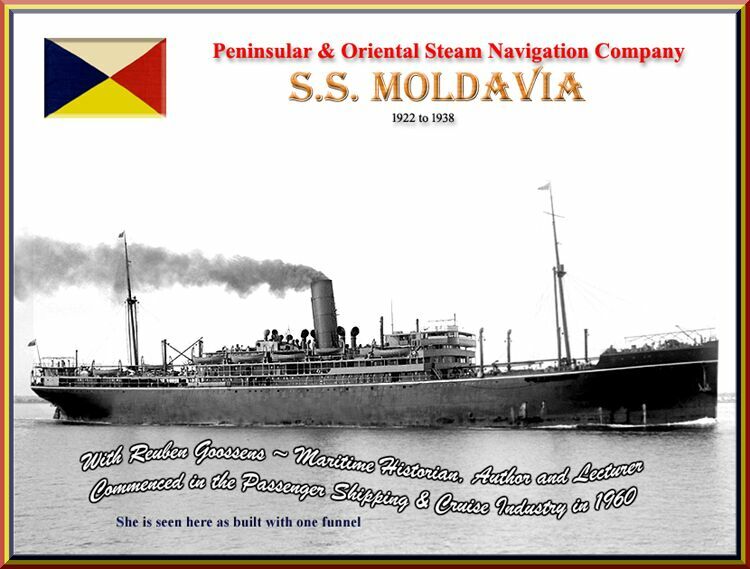
Please Note: Postcards, photographs & other images are either from the author’s private collection or from my supporters.
Thus thank you to my ssmaritime supporters for sending me their wonderful photographs & images.
I am
sorry if some of the images shown may not be of the highest quality, but they
are the best that were available
The “Peninsular & Oriental
Steam Navigation Company” Coat Of Arms
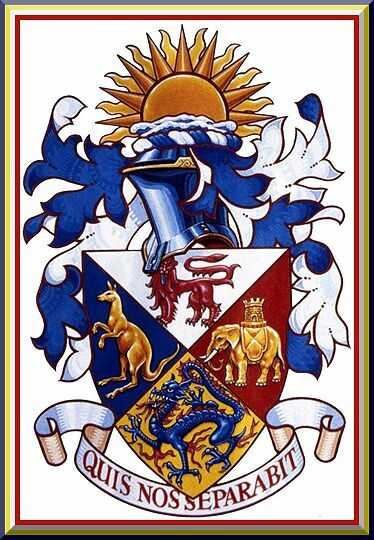
The Motto translates as “Who will Separate Us”
Obviously the three of the animals represent
the old days of their voyages, such as the Elephant represents
Thus let’s start from the very beginning!
*********************
S.S. Moldavia (I):
The first ship bearing this name was
built by “Caird & Company” of
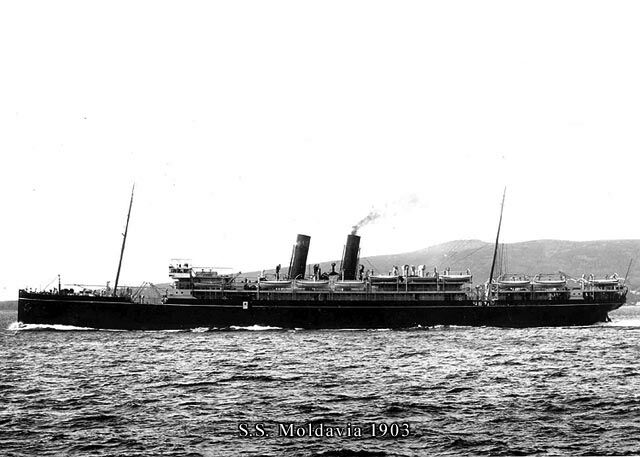
S.S. Moldavia (I)
She was hired by the UK Admiralty for use as
an “Armed Merchant Cruiser’” on November 27, 1915. But sadly
on May 23, 1918, she was torpedoed and sunk of
*********************
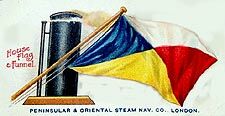
Construction to Launching of the S.S.
Moldavia (II):
The S.S. Moldavia (II)
was ordered to be built by “Cammell, Laird and Company” of
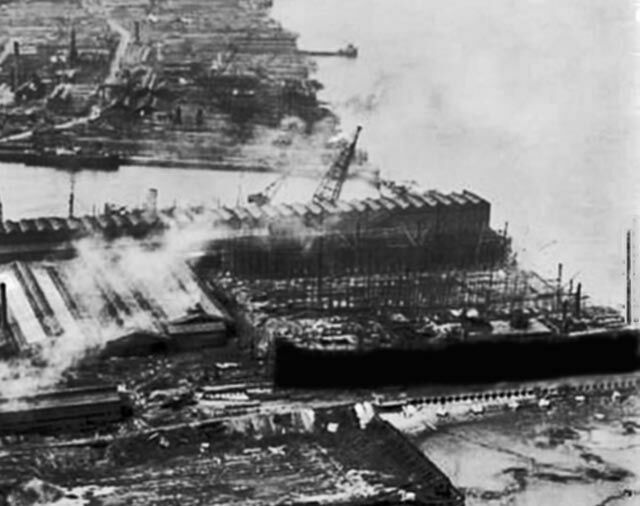
The
She was launched with a large crowd present on
October 1, 1921, and as she finally entered the water tugs took her under tow
and had her heading to the builder’s fit-out berth, where she would be
completed.
She was fitted with
“twin Parsons double reaction-geared turbines”, developing 13,250
IHP that drove her twin screws, giving her a service speed of 16
knots. Her engine room represented a major advance, in fact she was the
first P&O ship fitted with “double-reduction-geared steam
turbines”.
She had six passenger decks; Boat Deck,
Promenade Deck, Main Deck, Upper Deck, Shelter Deck and Shade Deck. As built,
the “
The Second Class Music and Smoking Rooms were located on the Shade Deck aft.
Passenger cabins were arranged according to the “the Inchcape plan”, meaning that every single cabin aboard had a porthole, providing ample light and fresh air.
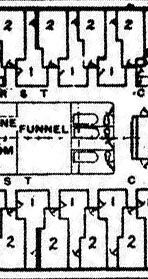
This show how the “Inchscape plan” works, although a plan of another ship is shown
Even those cabins that seemed to be on the “inside”, but they were designed in such a way that they all had a narrow passage to the ship’s side and the porthole.
A Brief note regarding the S.S. Mongolia:
Her almost identical sister the S.S. Mongolia
had a slightly lower tonnage of 16,504 GRT and she was ordered on November 22,
1918, and just like the 16,556 GRT “
The “
Trials and S.S. Moldavia’s Maiden Voyage:
Having been completed she was ready to undertake her sea and speed trials which she did very successfully on September 19, 1922, and having reaching a reasonable top speed of 16.3 knots. She was delivered the very next day to P&O at Tilbury.
She was fully manned and the ship was made ready for her guests. Her stores were filled as were her larders with the best of food products, all her cabins were made up to perfection and her holds were filled with cargoes bound for her first destination.
The big day had arrived
and on October 13, 1922, she departed Tilbury on her maiden voyage with excited passengers
at the railing, but she was not heading for
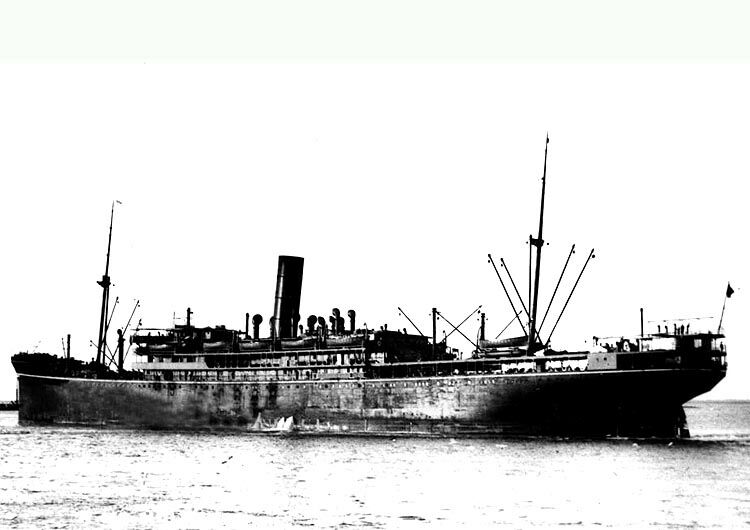
The S.S. Moldavia is seen here as built
As she departed the ship came amid considerable press criticism mainly that she had just a single funnel, and they all felt that was “rather insignificant for “a major Passenger Liner of her size and it marred her appearance”.
There was certainly no doubt that both she and her sister were somewhat outdated in their design, having straight stems, counter sterns and that much criticised single funnel, when they should have had the more stately two funnelled design! But no matter what, her passengers loved the ship itself, as the quality on board was far above perfection! They loved the Lounges, the comfortable accommodations, the excellent service, fine food, and the ship was one of the best ships at sea as she rode the waves so well, even when it was a bit rougher. Passengers rated her very highly, so who cared how many funnels she had!
However, finally on February 16, 1923, she was
transferred to the service she was actually built for, and she headed for
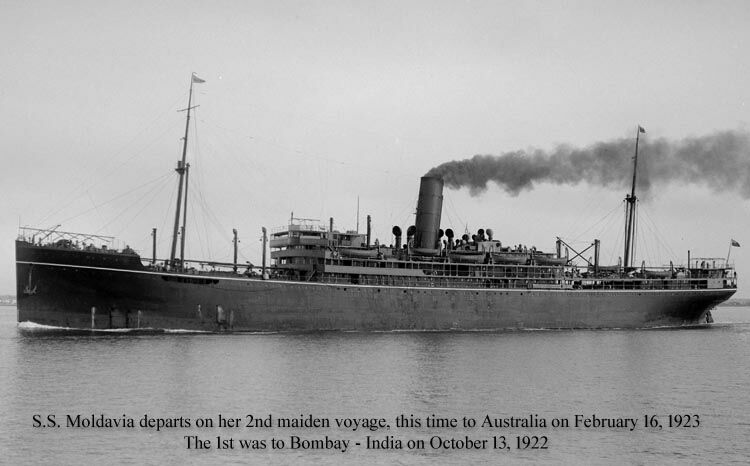
The “
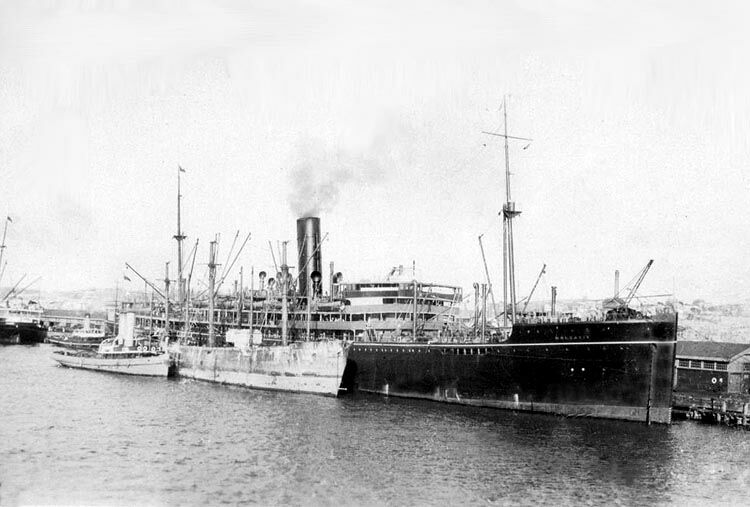
The “
*********************
Her Passenger facilities:
Let us take a look at some of her excellent passenger facilities, which were very highly regarded by her passengers.
First Class
Bridge & Boat Deck:
The Bridge being located far forward and a deck above Boat Deck. Obviously there was the Bridge located there, as well as the chart room.
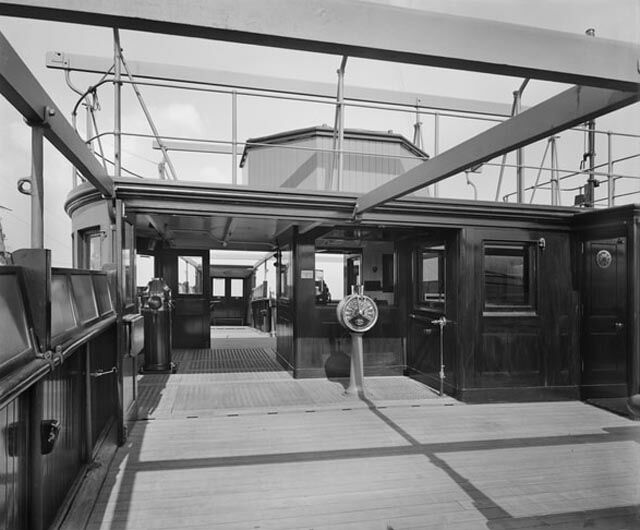
The Beautiful all timber Bridge as seen from the portside wing
Far forward on Boat Deck was the Captain’s quarters and his office; in addition there were the First Mates, and the Chief Engineers quarters and the Radio Office.
Boat Deck outside was a spacious and a long deck and it was a popular location for sunning, or just going for a walk and chatting with fellow passengers, as well as playing various games of sports, be it Shuffle Board, Deck Tennis, Quoits and other activities as arranged by the ship’s crew.
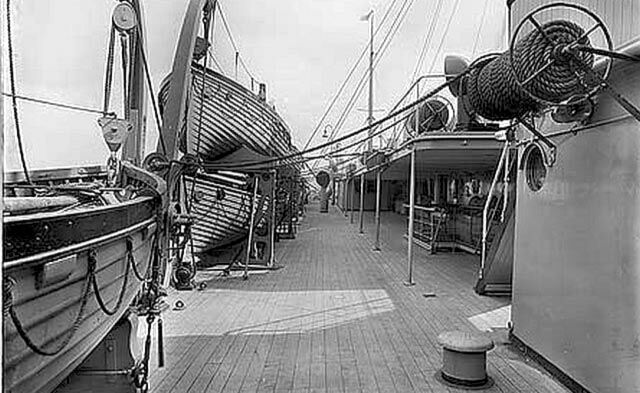
Boat Deck
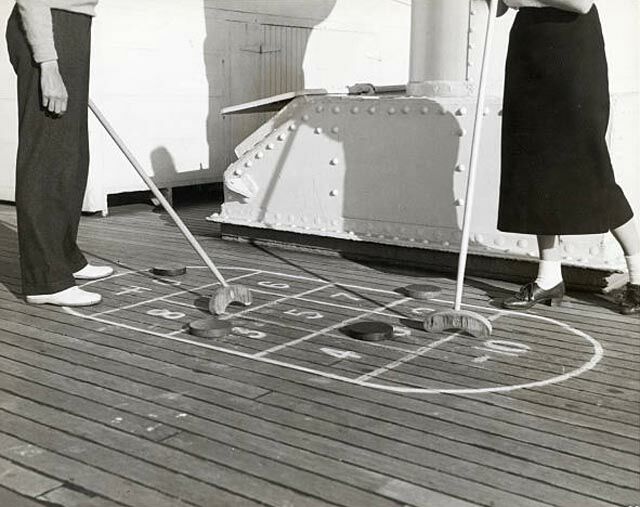
The ever popular Shuffle Board
Promenade Deck:
The Lounge was located forward and featured windows on three sides, allowing light streaming in from forward and the two sides. The ceiling and parts of the walls were in ivory pearl, and the trim as well as the columns in soft fine timbers. Furnishings were in mahogany with chairs either beautifully upholstered or others having cane inserts giving a somewhat more casual feel.
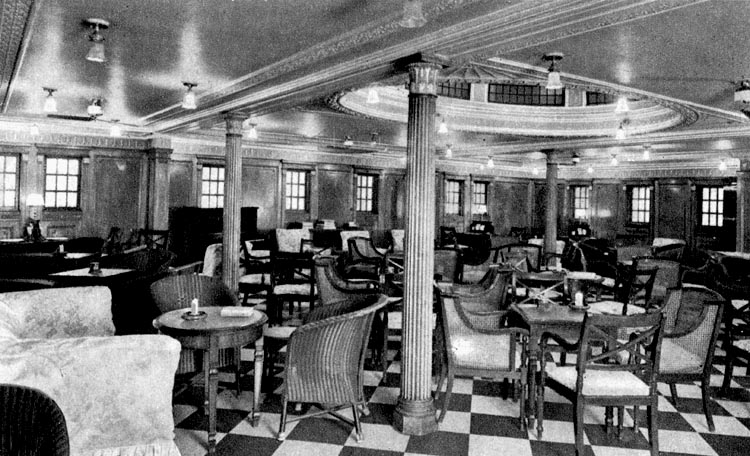
The glamorous Lounge
Yet there were large comfortable lounge chairs which were richly upholstered in the finest tapestries. In the centre of the room there was a round dome that reached up high onto the Boat Deck, and it featured a huge stained Glass dome, which was a spectacular feature of the room!
Directly aft of the Lounge was the First Class Main Lobby with its Grand beautifully carved timber Staircase that went up to Boat deck and down Shade Deck forward, was located centred on the aft bulkhead and on both sides where electric lifts (elevators).
Nearby was the intimate Card and writing Room is very much an all old style English venue and mostly furnished with wicker chairs and mahogany tables, as well as leather chairs and writing tables. And as we can see above this venue, as all the Public Rooms on Promenade Deck had a dome going up into Boat Deck above featuring a fine Stained Glass top!
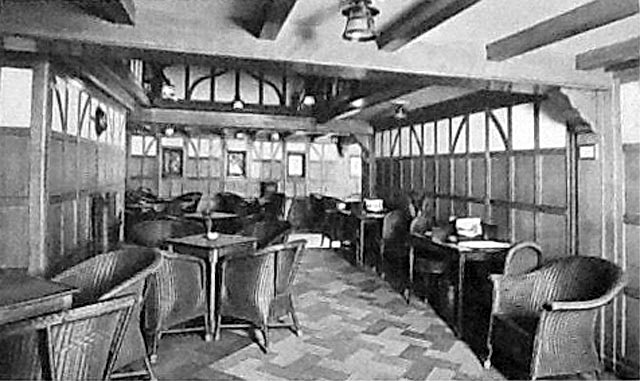
The very English Card & Writing Room
We will just head outside for a moment and take a look at the spacious Promenade Deck; of course Main Deck just below also offers a promenade deck, thus the ship offers two promenades, as well as the very spacious Boat Deck!
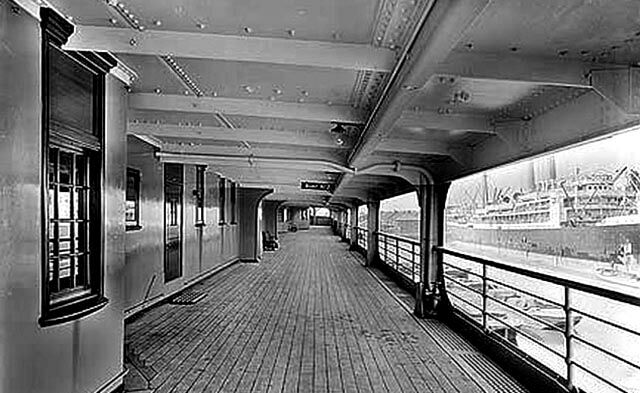
This is a view on
the starboard side looking forward
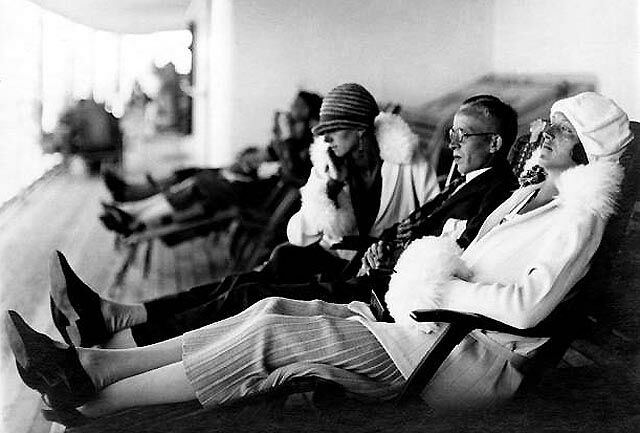
Passengers relaxing out on Promenade Deck
But there is still the magnificent Smoking Room just aft amidships, and this venue is heavily clad in fine timbers and is a warm and an elegant venue.
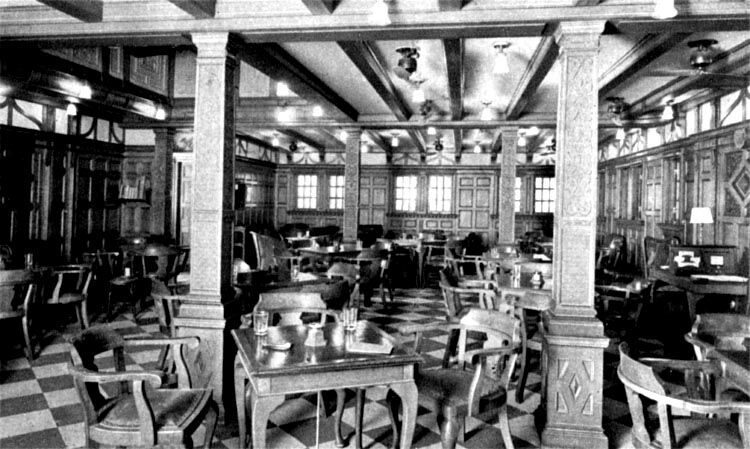
The magnificent Smoking Room and it has a bar
There are four square grandiose timber columns in the centre of the room and the décor of the entire venue can be seen above, it is simply magnificent!
Like the Lounge it also has a Dome in its ceiling, but this one was also square, and it’s was certainly a staggeringly beautiful one as we can see from the photograph below!
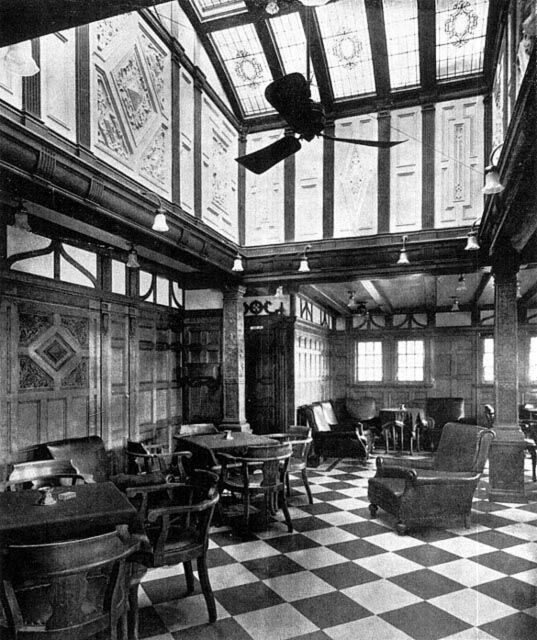
Here we see the magnificent feature of the Smoking Room, which was without a doubt very special
Just aft of the Smoking Room was the Verandah Café, for that outdoor view and a nice cup of tea, or coffee and a snack, etc.
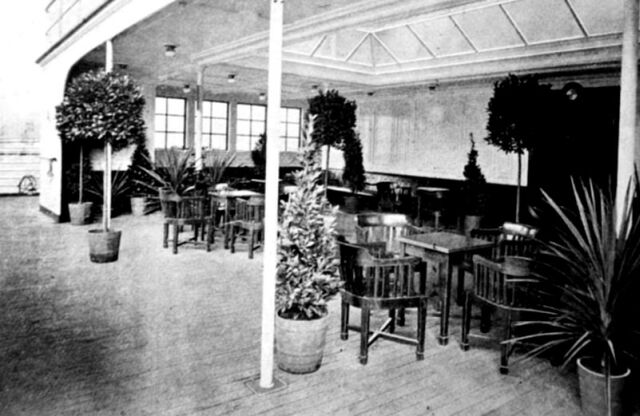
The delightful Verandah Café
Later the venue was enclosed and had glass doors added to the rear making it more suitable to offer evening meals in an intimate setting.
The Dining Saloon was located on Upper Deck directly aft of the forward Main Lobby. It certainly was a splendid venue being superbly furnished with the finest quality of furnishings, made of mahogany and elegant in style, as soon as one entered you would be assured that a fine meal awaited you as you were shown to your table by one of the polite and perfectly dressed stewards.
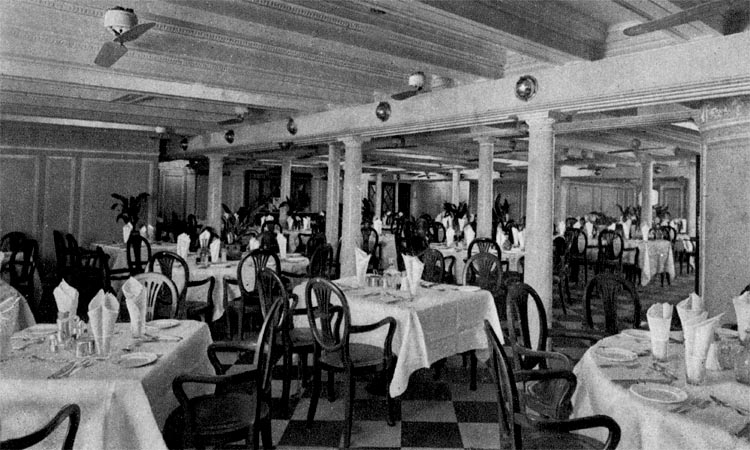
The venue stretched the full width of the ship and it was a fine and a spacious venue, beautifully decorated in every respect. It was the venue you expected featuring the finest silver and fine porcelain to match the best of cuisine that was on offer!
Below we see a twin bedded cabin whilst there were also ample single bed cabins available. Some cabins did offer a third berth if required. Behind the bed on he right is the passage that leads to the porthole, thus all the light that can be seen.
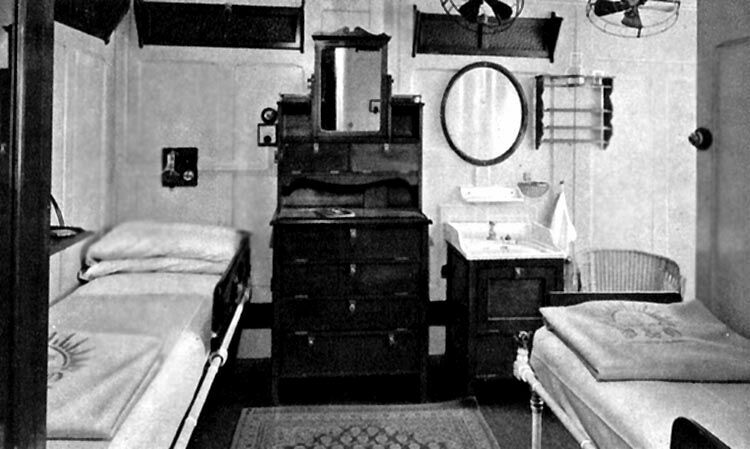
A twin bedded cabin
Of course there were many other facilities available on board, besides the Pursers Office, there was a Shop a Ladies Beauty Saloon as well as a Gents Hair-dresser, etc, a Doctor’s Surgery and a Hospital if needed. A laundry was available to the Guests and access to the baggage room.
*********************
Second Class
However I did locate some of the cabins, which
were very similar to those of the First Class, except the Mirrors were not
quite as fancy, and the rooms were
slightly smaller of course. Yet they were well furnished as Two, Three or Four
Berth cabins.
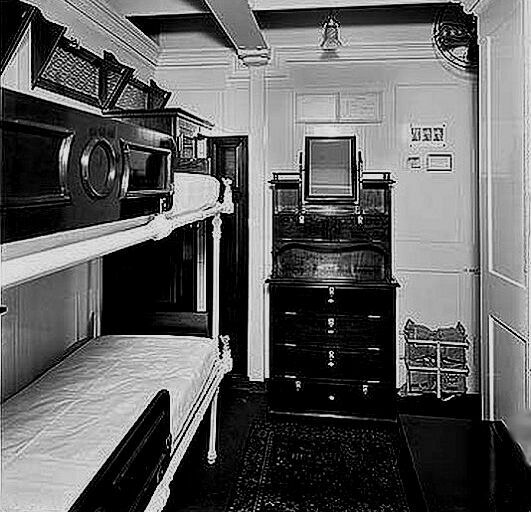
A two berth cabin
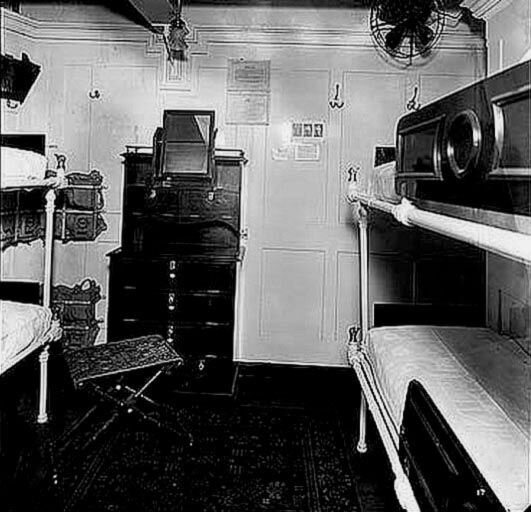
This cabin can be sold as a twin bedded, or as a three and a four berth cabin
I am sorry that I am unable to show you any of
the other features of this Class, which became Third Class later and finally
the ship became a One “Tourist” Class ship (or Emigrant Class).
Her History Continues:
However during her last voyage of 1923, on
December 26, somehow a fire broke out in a cargo of fibres which had been
loaded at
Three Refits:
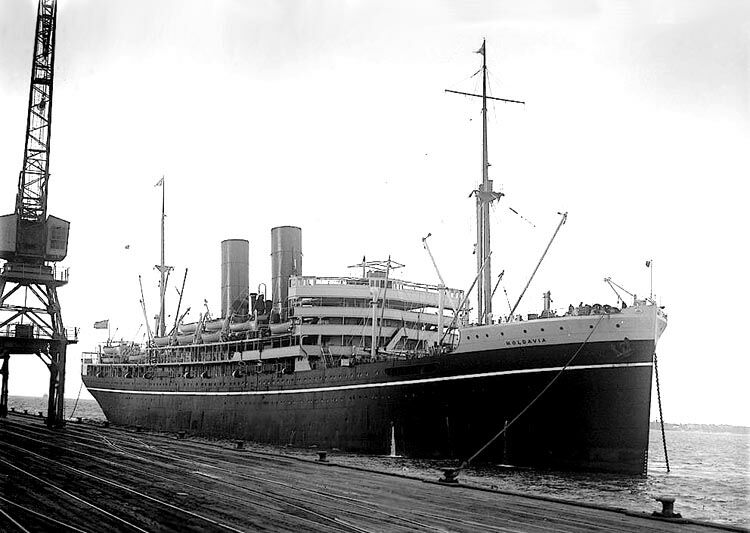
The new look S.S.
Moldavia with her two funnels
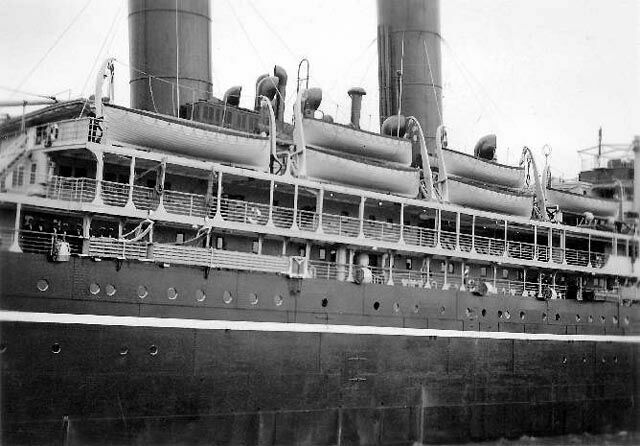
A close up view of her new funnels, some of her crew can be seen aft on Main Deck
But just two years later in 1930 there was
another refit and now she was wholly reclassified as Tourist Class ship when
she was operating as a cruise ship, and when on the Australian emigrant service
she would be an “Emigrant (Third) Class” ship with 830 passengers.
Passages to
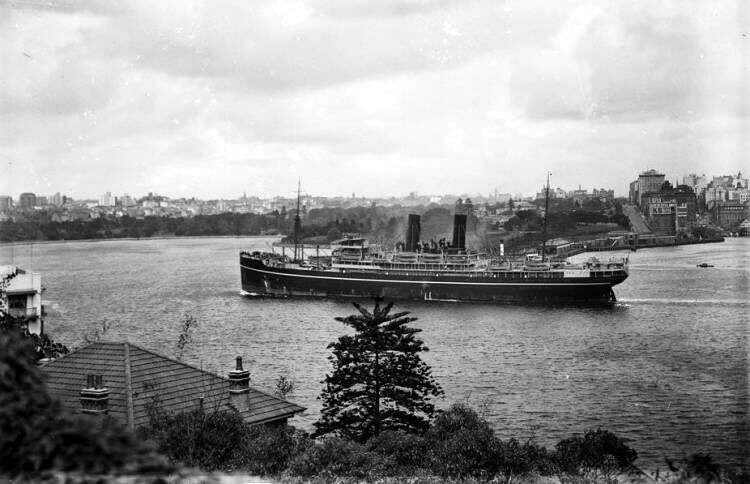
The S.S. Moldavia
is seen departing
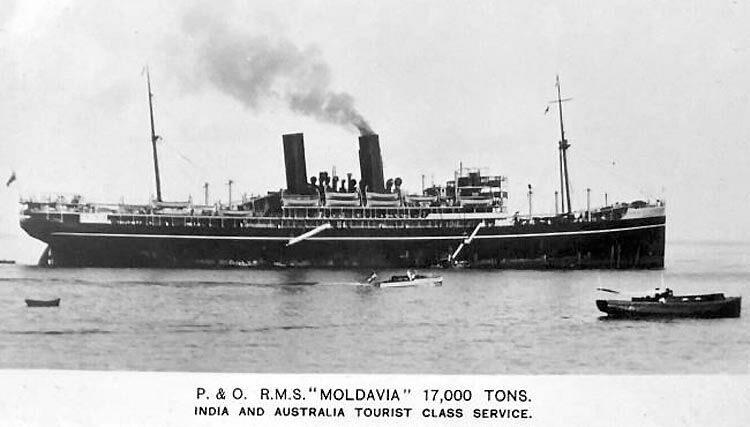
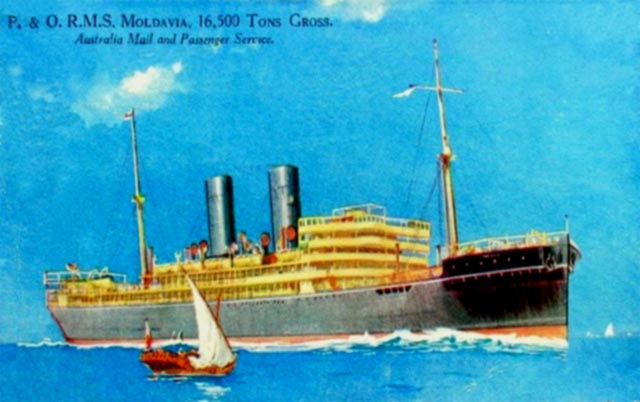
A newly released
colour postcard of the “
Then one more refit in 1931, when Steam super-heaters and two new propellers were fitted, which did increase her maximum speed to just over 17 knots.
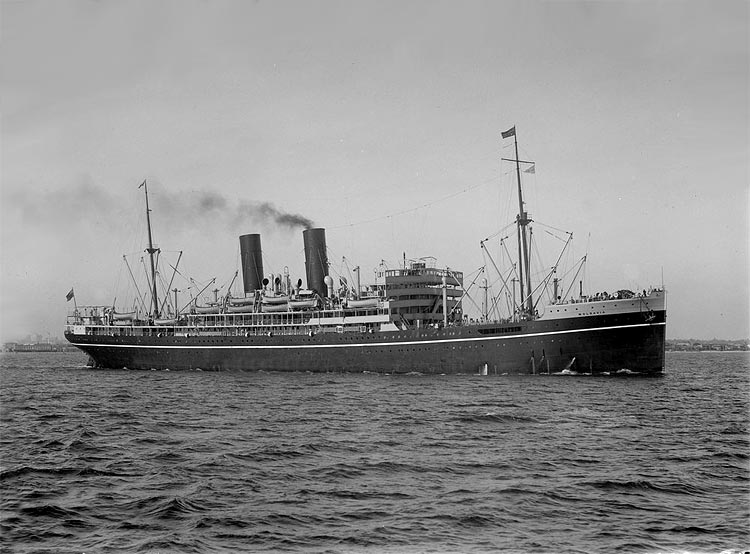
She is seen having
departed
is about to head
into
can turn around
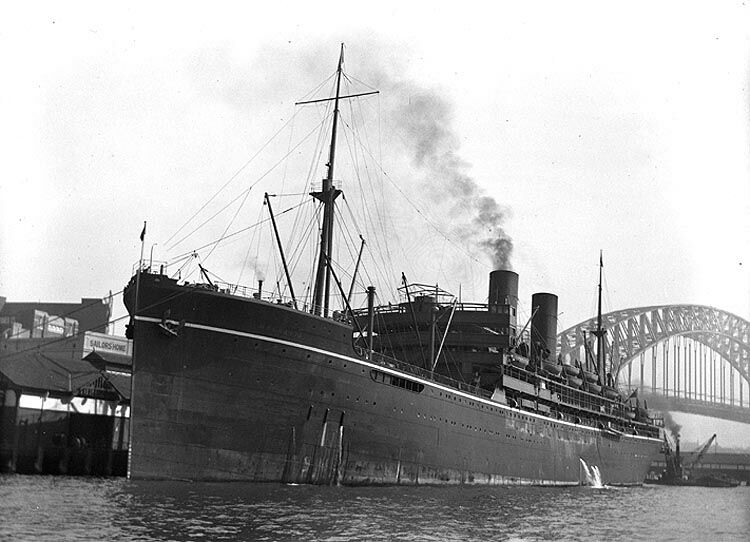
S.S. Moldavia is
seen at
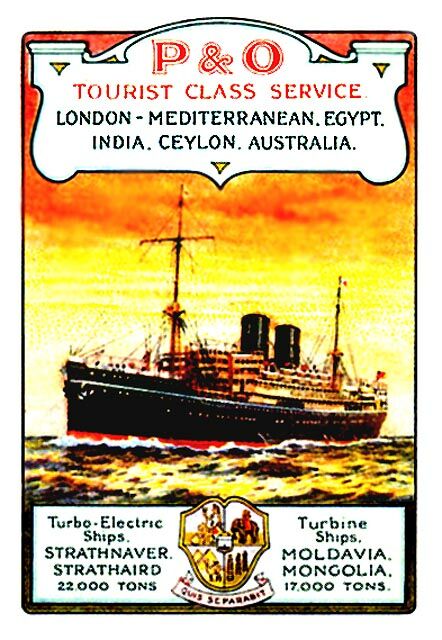
A full colour
P&O poster
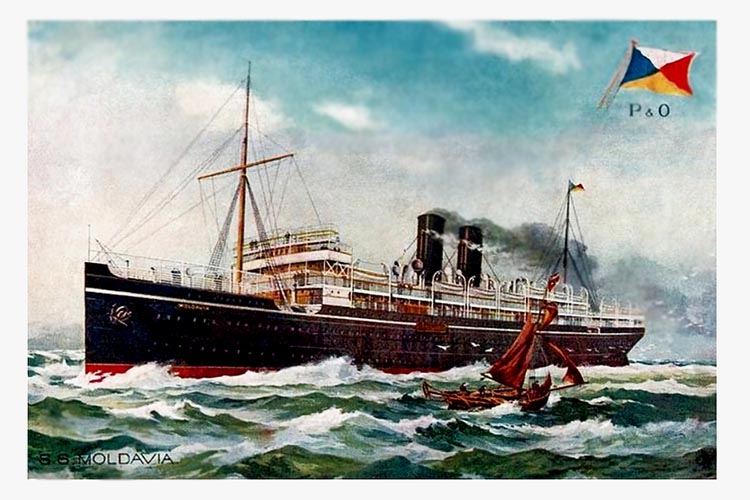
A popular colour P&O postcard of the S.S. Moldavia
There was no doubt that she was becoming a popular cruise ship, and what made it even better that her fares were exceptional value. In 1935 she had scheduled 11 cruises as seen in an advertisement in the Newspaper on February 15, 1935, below.
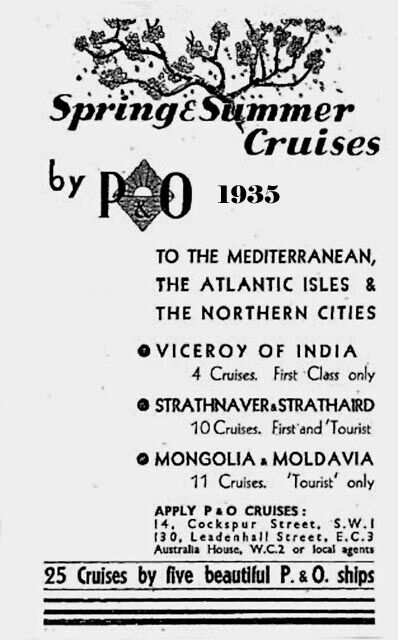
During 1935 she was also chartered to carry
guests to the Coronation Review at
However, sadly on July 21, 1935, suddenly a
fault appeared with the port turbine having left
But she returned thereafter as good as new, and continued her very popular cruise series, and in 1936 she operated two much longer cruises, such as;
On April 9, she operated a 23 day cruise to
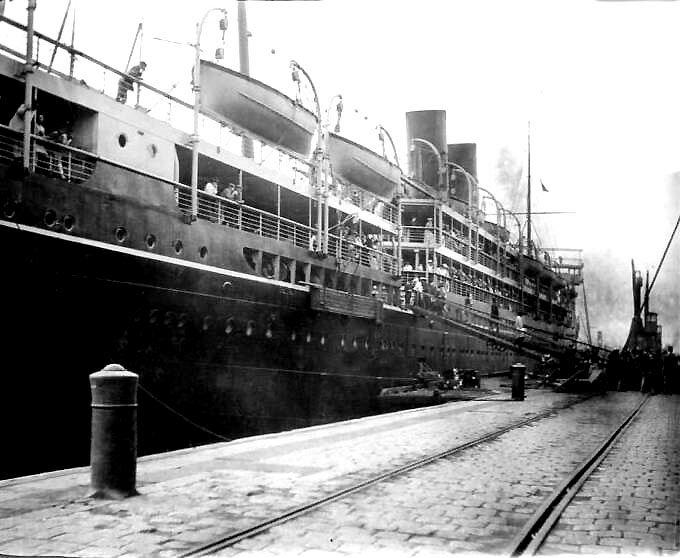
Ready to depart from another port and visit a new and exciting port of call, that is what cruising is all about!
Then on May 9, she operated a 14 day cruise to
She departed again on another 21 day cruise
from Southampton on August 1, 1936 visiting;
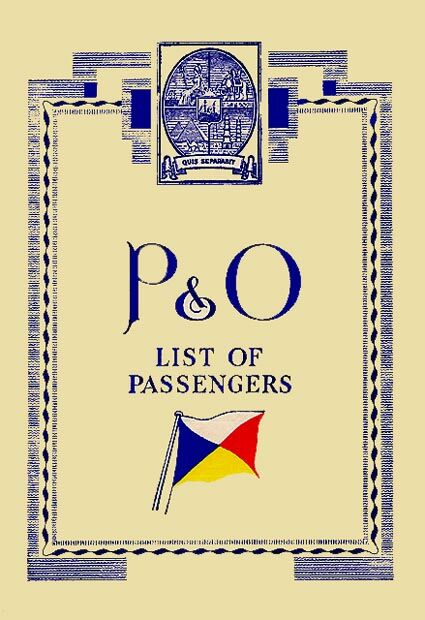 -
-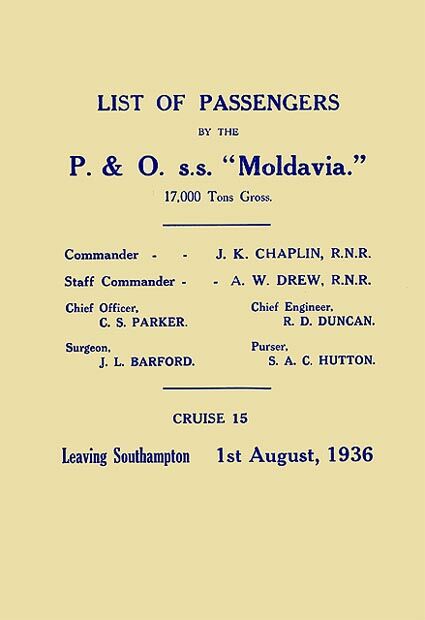
In addition, her Tourist voyages to
S.S. Moldavia’s Final Years:
She departed Tilbury what was to be her very
last ever voyage to Australia on September 17, 1937, and having arrived in
Sydney then went to Brisbane and she departed there on November 2, arrived in
Sydney on November 4, and the next day she headed off for her very last 7 day
cruise ever. Upon her return on the 12th, she departed on November
13, there was a sad farewell from the people of
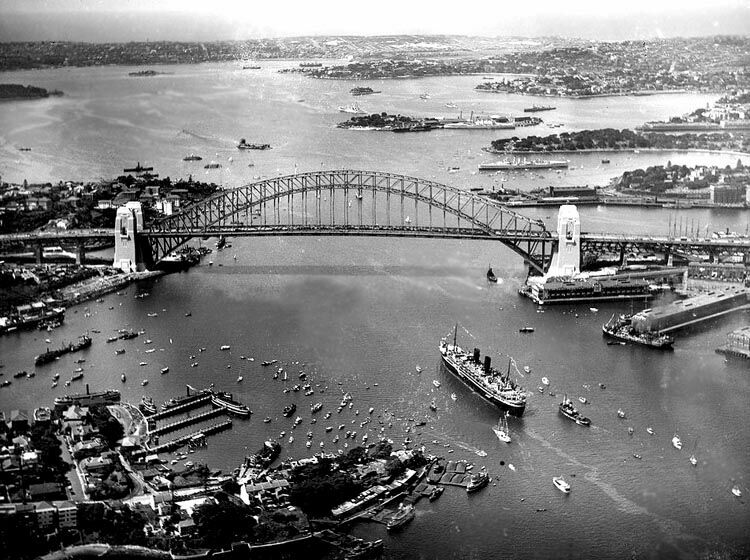
She had quite a fleet of yachts and a good number of tugs that would
also join her further on to farewell her properly!
Then, even up on Sydney Heads, there were
countless people high up for she had to pass through the Heads in order to
leave
Passengers on this her final voyage simply had
a wonderful voyage as her crew really outshone themselves, as past passengers
on board stated that they were even more attentive than ever before, for
let’s face it, this was a one of a kind voyage and everyone made sure it
was going to be very special, more like an great event! On arrival at Tilbury
on December 24, 1937 it was more like a huge family parting, with hugs and
kisses amongst passengers and crew, as they seemed to have become family over
the past month or so, and it was such a sad event, no-one wanted to leave the
ship, but they all had to, as everyone had homes to go to, etc. But the memory
of that wonderful final voyage on the S.S. Moldavia would remain with them for
a very, very long time! After passengers had left the ship, as well as a good
number of her crew, the “
Then, on April 5, 1938, the “
Please Note:
Below the Ships Specifications and Details
below, there is one further section containing some of her Menus, as well as
items of Memorabilia and Souvenirs.
Specifications & Details S.S. Moldavia (II):
Name:
Type: Passenger & Cargo Liner.
Registered Owners: Peninsular & Oriental
Steam Navigation Company.
Builders: Cammell Laird
& Co Ltd,
Yard No: 839.
Launched: October 1, 1921.
Sea & Speed
Trials: September 19,
1922.
Delivered: After her Trials
on September 20.
Registered at:
Maiden Voyage: October 13, 1922, Tilbury
to
February 16, 1923:
Departed on her first
voyage of her permanent service to
Official No: 145973.
Call Sign: KMSJ.
Signal Letters: GDVZ.
Classification
Society: Lloyds of
Tonnage: 16,556 GRT,
10,065 NRT, 12,225 DWT.
Length: 552.4 ft -
168.31 m.
Width: 71.7 ft -
21.85 m.
Draught: 30.1 ft - 9.147
m.
Engines: Six
double-reduction-geared Parsons steam turbines to 2 shafts, by builder.
Power: 13,250 SHP.
Propellers: Twin Screws.
Speed: 16 Knots service speed.
Accommodations:
As built: 222 First Class, 175 Second Class.
1928: 222 First Class, 175 Third Class.
1930: 830 berths - Third Class or Tourist (Emigrant) Class.
Crew: 350.
Cargo Capacity: 743,595 cubic feet - 21,053 cubic metres & 145,716 cubic feet - 4,126 cubic metres of refrigerated space. Total of 7 compartments.
Refits:
1925: Tonnage was re-measured at 16,436 GRT.
1928: A second dummy funnel was added aft of the original funnel, and the boilers were converted to burn oil fuel. Tonnage was then 16,543.
1930: Another
refit with all accommodation being reclassified as Third Class or Tourist
(Emigrant) Class, for 830 passengers. Passages to
1931: Steam super-heaters and new propellers were fitted which increased her maximum speed to 17 knots.
1935: Chartered to
carry guests to the Coronation Review at
July 21, 1935: There was a fault with
the port turbine after leaving
September 17, 1937: Left Tilbury on her final Australian voyage.
September 17,
1937: Last departure from
December 14, 1937: Last arrival at Tilbury. Laid up pending sale.
April 5, 1938: The Moldavia was
sold to ‘John Cashmore Ltd’ for
April 11, 1938: She was handed over at Tilbury.
April 18, 1938: S.S. Moldavia arrived at
I have a number of items directly related to the S.S. Moldavia such as Menus and items of memorabilia purchased on board from the ship or received as prizes, etc.
1… Menus:
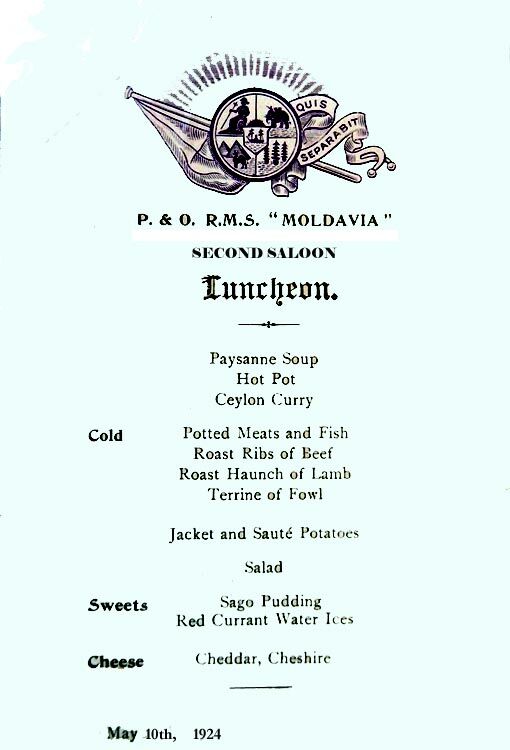
Second Class Lunch
Menu May 10, 1924
 -
-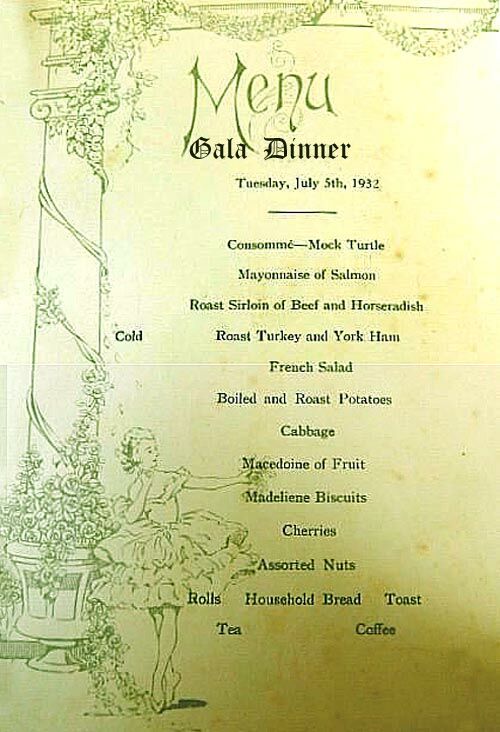
First Class Gala
Dinner Menu for July 5, 1933
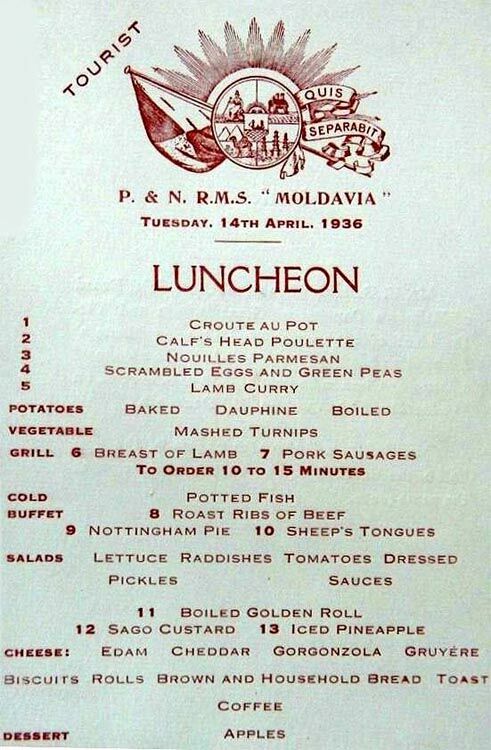
Tourist Class
Lunch Menu April 14, 1936
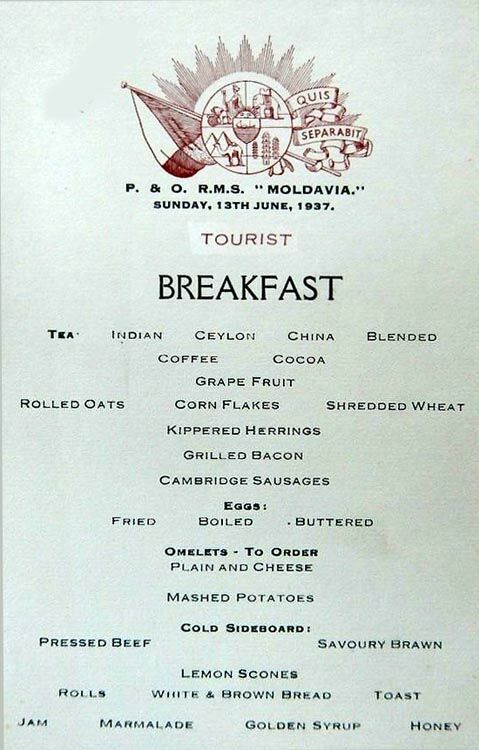
Tourist Class
Breakfast Menu June 13, 1937
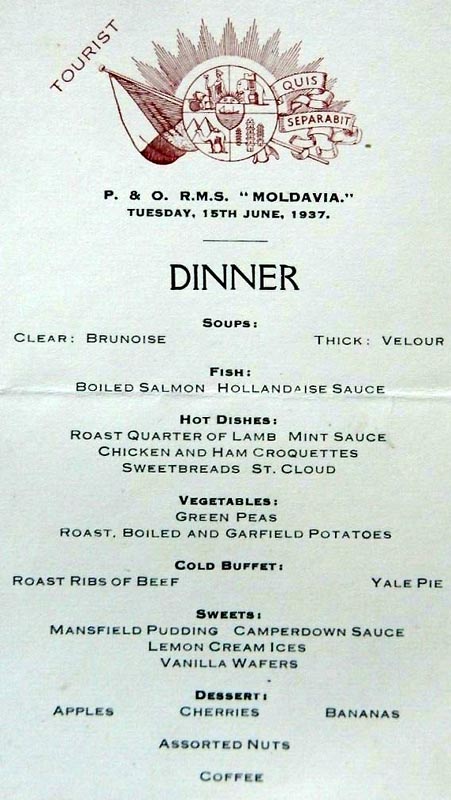
Tourist Class Dinner Menu June 15, 1937
2… Memorabilia & Souvenirs:
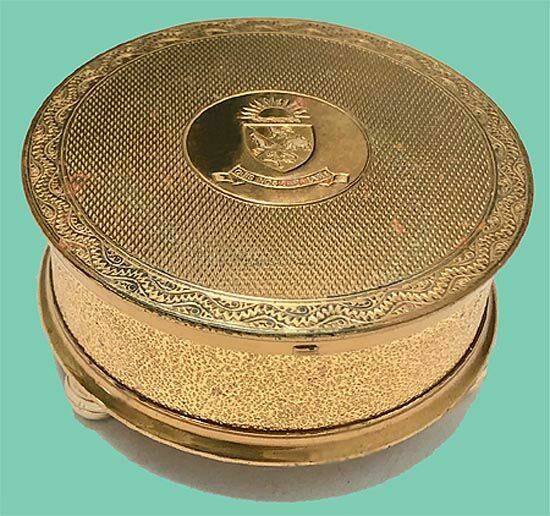
A Gold ladies powder bowl
Inscribed with P&O’s official Coat Of Arms and their Motto;
“Quis nos
separabit” - “Who will separate Us”
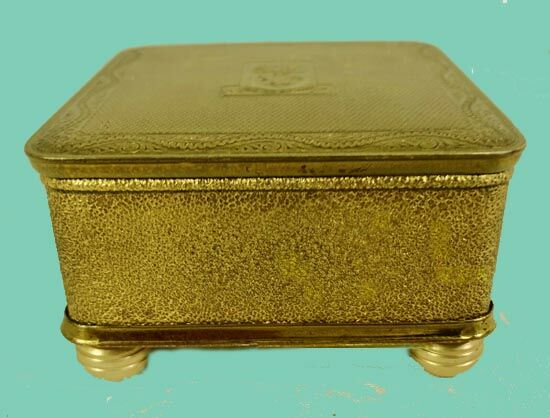
Above &
below: A Gold Jewellery Box with the
P&O’s Coat Of Arms and their Motto on the lid
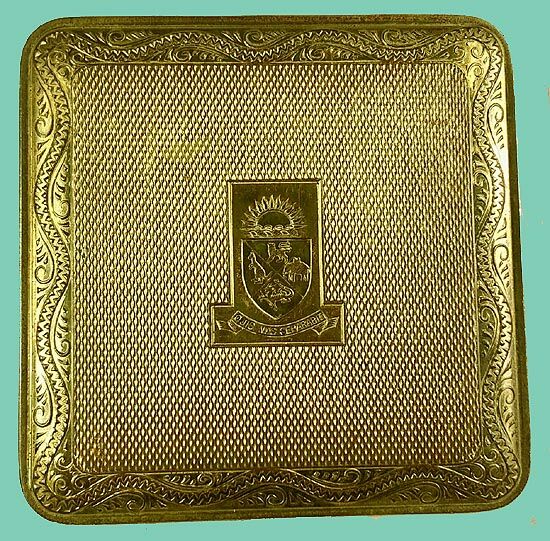
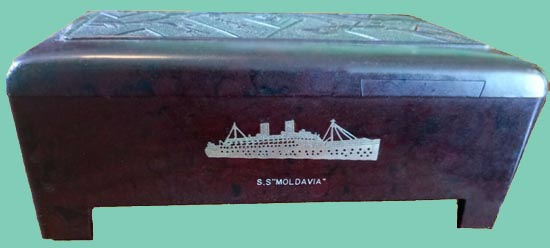
A blue, embossed
inlaid bakelite lidded box from the S.S. Moldavia
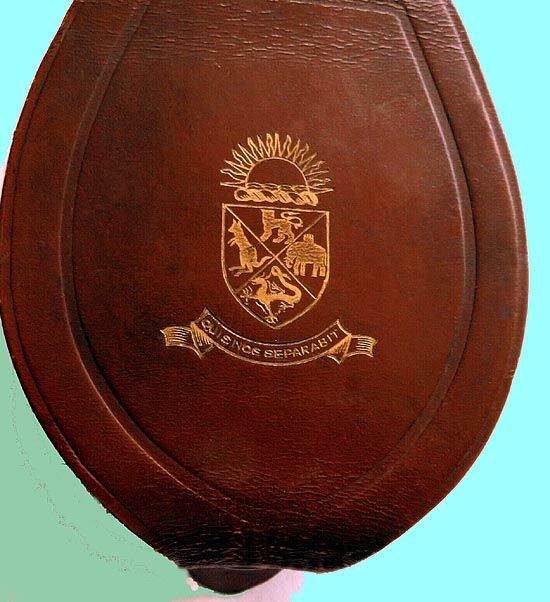
A Gents leather
Cuff-links Box also has P&O’s Coat Of Arms and their Motto on it
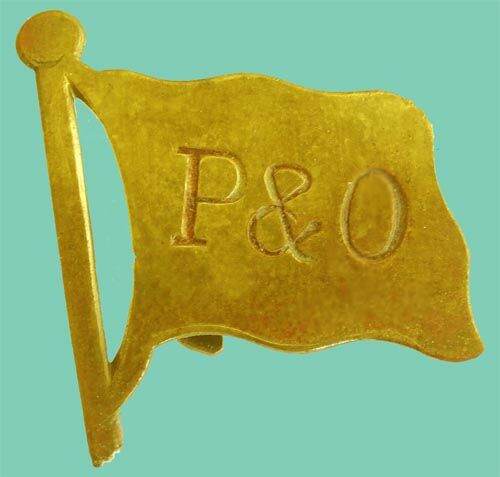
A pin in the shape
of a flag with P&O on it, not sure of its origin, but it came off the
“
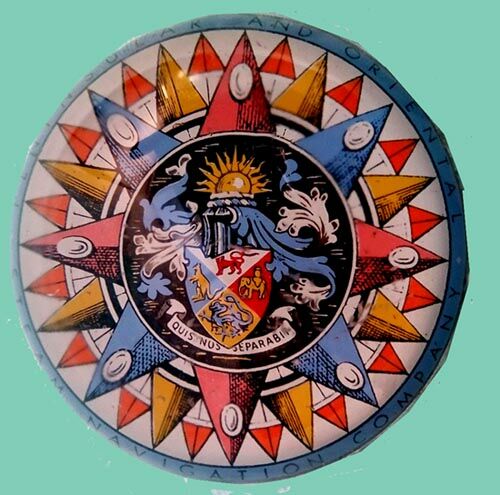
Above &
below: A beautiful and such a colourful - heavy
paperweight with the P&O’s Coat Of Arms
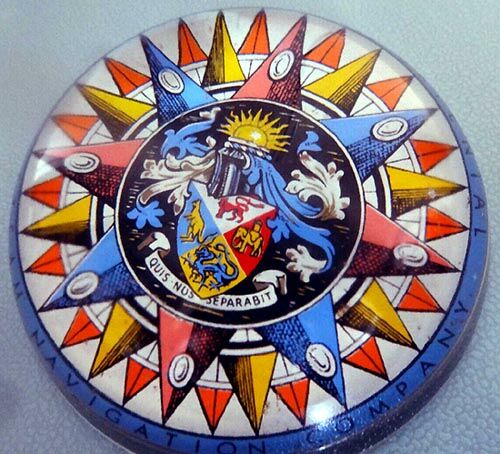
R emembering
the Remarkable, but Short Days
of the Orient Liner
- S.S. Moldavia
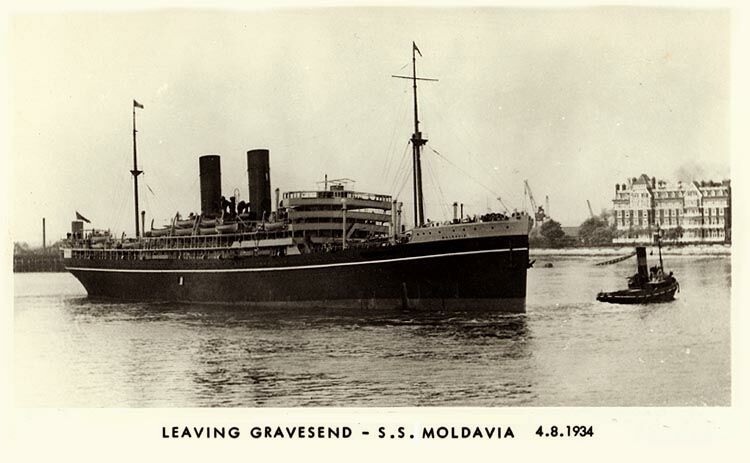
The S.S. Moldavia
seen leaving
Also view her
sister ship: RMS Mongolia
*********************
“Blue Water
Liners sailing to the distant shores.
I watched them come, I watched
them go and I watched them die.”
Featuring over 1,550 Classic Passenger Liners, Passenger-Cargo Liners & Classic Cruise Ships!
Or ENTER HERE
For interest: Sadly an email service to ssMaritime is no longer available, due to the author’s old age and chronic illness as well as being disabled, etc. In the past ssMaritime received well over 120 emails per day, but Mr. Goossens can no longer handle same. He sincerely regrets this!
*********************
ssMaritime.com & ssMaritime (offline)
Where the ships of the past make history & the 1914 built M.S. Doulos Story.
The Author has been in Passenger Shipping & the Cruise Industry for well over 60 years
In addition he was the founder of “Save the Classic Liners Campaign” in 1990.
Please Note: ssmaritime and associated sites are 100% non-commercial and the author seeks no funding or favours of any shape or form, never have and never will!
Photographs on ssmaritime and associate pages are by; the author or from the author’s private collection. In addition there are some images that have been provided by Shipping Companies and private photographers or collectors. Credit is given to all contributors. However, there are some photographs provided to me without details regarding the photographer/owner concerned.
This notice covers all pages; although, and I have done my best to ensure that all photographs are duly credited and that this notice is displaced on each page, that is, when a page is updated!
ssMaritime is owned & © Copyright by Reuben Goossens - All Rights Reserved

